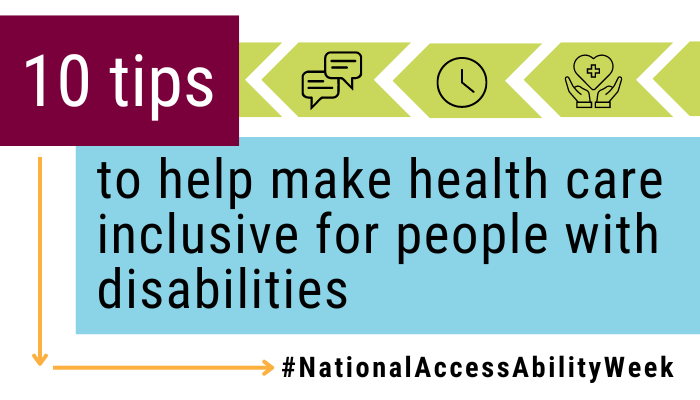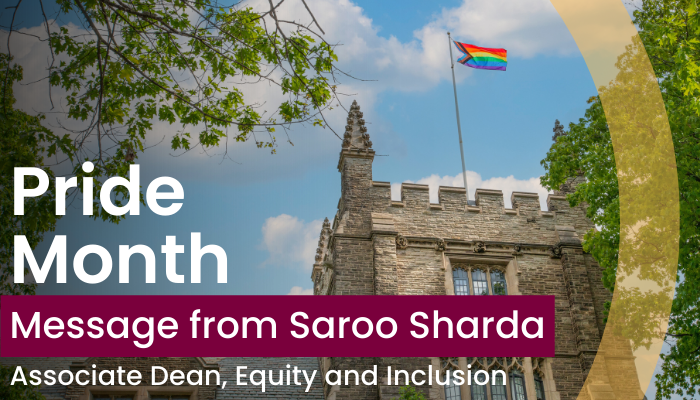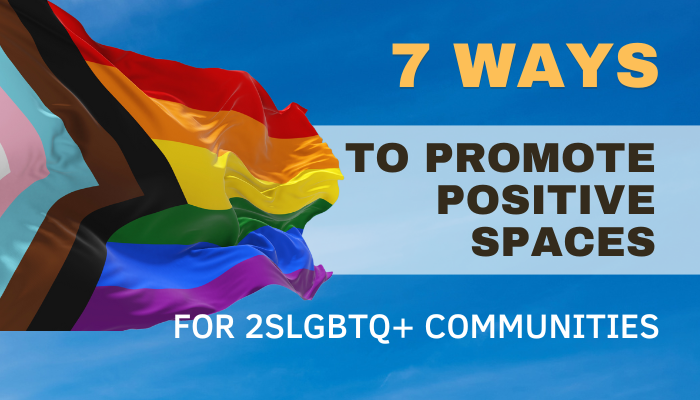10 tips to help make health care inclusive for people with disabilities

This year, National AccessAbility week takes place from May 28 to June 3, 2023.
This week is an opportunity for all Canadians to celebrate the progress made to remove barriers, the contributions of people with disabilities and the continuing efforts that must be made to make Canada a more inclusive and more accessible place to live and work.
In collaboration with Saroo Sharda, associate dean of equity and inclusion, here are 10 tips to help make health care inclusive for people with disabilities.
1. Understand that disabilities do not create barriers – systems do
The systems and structures within society were built for the non-disabled. Health care professionals should be mindful of the physical and mental barriers that can be experienced in accessing health care and, where possible, work with individuals to find appropriate and fitting solutions.
2. Look for education outside of academia
What health care professionals learn in school is likely a fraction of the reality and history of disability. Academic knowledge does not compare to lived experience or a person’s relationship with disability. It is important to seek out knowledge from a person-centric approach, learning more about individual experiences and the communities around disability.
3. Focus on supporting a person, not changing them
People with disabilities do not need to be “fixed.” A disability is not something to “cope with” or “struggle through.” Disability does not equal unwell or unhappy. Health care professionals should work with the individual to find out their goals and how they want to be helped, rather than focusing on how to help them present as “normal” (i.e., non-disabled).
4. Cultivate mindfulness
When interacting with people that have an intellectual or developmental disability (IDD), it is important to be mindful of how they interact with their environment and their family or support workers. Communication is key, but it is important to remember that people communicate their needs, concerns and boundaries in different ways. Recognize and follow a person’s cues – both verbal and non-verbal.
5. Acknowledge the implicit belief that non-disabled = normal
Without pausing to reflect on why being non-disabled is regarded as normal, it is not possible to address how disability is treated as abnormal. They are two sides to the same coin – any positive and meaningful change must address both.
6. Adopt a trauma-informed approach
People with disabilities may have had traumatic experiences in healthcare settings that health care professionals are not aware of. This is especially the case for people with an intersectional identity, who experience any number of other isms (i.e., sexism, racism, ageism, etc.), in addition to ableism. Using a trauma-informed approach can help avoid triggering past traumas.
7. Do not assume it is about disability
A person’s disability is not the root cause of all issues and concerns they experience. It is important to be mindful of this and listen to what a person is communicating, rather than understanding everything through the lens of disability (e.g., during assessment).
8. Recognize the authority of people with disabilities
How a disability is perceived can be different from how it is experienced. And yet, health care professionals often underestimate an individual’s ability to communicate their own needs and experiences. Include the individual in conversations that pertain to their health and well-being. An advocate may not be there because the individual does not understand – they may be there because the health care professional does not understand how to communicate with that individual.
9. Create space
Time can be a barrier for many people with a disability. Or, more accurately, the inflexibility of a system that does not allow more time to accommodate a person’s individual needs. By scheduling a longer appointment, or reducing what a single appointment needs to cover, health care professionals can create the necessary space for a person to not feel rushed or like a burden. Taking the extra time can help a person feel comfortable and supported.
10. Reflect on the possibility of a future disability
If a person is non-disabled now, they may not want to think about the possibility of having a disability. But not all disabilities are genetic or present from birth. As people get older, the likelihood of remaining non-disabled decreases. Empathy can be fostered by reflecting on the fragility of non-disabled-ness and decentering individual ability.
Learn more about ways to provide inclusive healthcare for people with disabilities:
- Examining the Root Causes of Ableism
- What do Disability Biases Look Like in Practice?
- Invisible Three Percent
- The Importance of Feeling Safe
- ‘In Dialogue’ Episode 15: Inclusive Healthcare for People with IDD
Visit the Accessibility Hub for more information on accessibility and inclusion at McMaster University, including:
- Accessibility Definitions
- Accessible Education Training
- AccessMac Program
- Disability, Inclusion, Madness, Accessibility, Neurodiversity (DIMAND) Working Group
- Employee Accessibility Network
Thank you to Saroo Sharda, associate dean of equity and inclusion, for providing the resources above.
Equity, Diversity & Inclusion NewsRelated News
News Listing

Pride Month message from Saroo Sharda, associate dean of equity and inclusion
Equity, Diversity & Inclusion News
June 3, 2024

7 ways to help promote positive spaces for 2SLGBTQ+ communities
Equity, Diversity & Inclusion News
June 27, 2023

Daily News ➚
National Indigenous History Month: a time for education and reflection
Equity, Diversity & Inclusion News, Indigenous Health
June 1, 2023
